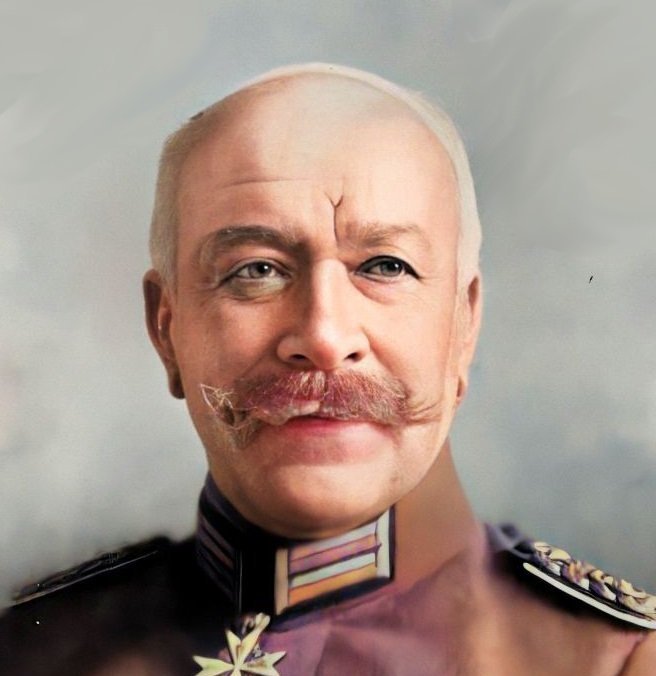
Biographies
Hermann von Francois
One of the most aggressive commanders in the German Imperial Army, Hermann von Francois clashed with nearly every immediate superior he had. Twice decorated with the Pour le Merite, he would be forced out by his rival Ludendorff shortly before the end of the Great War.
William Westmoreland
The second commander of the Military Assistance Command - Vietnam (MACV) was also its most famous, serving in the position during the Tet Offensive of 1968 before being promoted to Army Chief of Staff, although his legacy in Vietnam remains controversial.
Tamon Yamaguchi
Entering service just in time for the Great War, Tamon Yamaguchi would go on to become one of Japan’s best carrier commanders. He would take part in the Pearl Harbor Attack in late 1941, but would lose his life months later, choosing to go down with his flagship at the conclusion of the disastrous Battle of Midway.
Pietro Badoglio
An Italian general who narrowly escaped the blame for the disaster at Caporetto in 1917, Pietro Badoglio would later become Mussolini’s favorite general before being appointed by the King to replace the Duce.
Jimmy Doolittle
One of the most famous figures in the history of American aviation, and the leader of the famous Doolittle Raid on Japan in 1942, Jimmy Doolittle was a pioneer of various flight techniques as well as a skilled and daring pilot.
David Beatty
The commander of the Royal Navy in the latter half of the Great War grew a reputation as one of the great leaders in the history of the service, although his actions at Jutland in 1916 were not without their critics.
Edward Rydz-Śmigły
The commander of the Polish Army in their desperate but doomed defense in late 1939, Edward Rydz-Smigly had been a key player in the movement for Polish independence as the Great War ended, later became controversial for fleeing the country as resistance collapsed.
Ngô Quang Trưởng
Regarded by many as perhaps the best commander in the Army of the Republic of Vietnam, Ngo Quang Truong led ARVN forces in the Battle of Hue during the Tet Offensive, as well as in the final campaigns as the South Vietnamese government collapsed in 1975.
William Simpson
The commander of the US 9th Army in the Second World War, William Hood Simpson was very popular with his men, fellow officers and allies, gaining accolades from such men as Dwight D. Eisenhower and Bernard Montgomery.
Alwin-Broder Albrecht
A lesser known member of Adolf Hitler’s personal staff, a former naval officer saved from the wrath of his superiors by the personal intervention of the Fuhrer. This would lead him down a path to destruction with the Third Reich, taking his life in the bunker as the Soviet Red Army closed in.
Grigori Rasputin
The infamous mystic who gained the confidence of the Tsar during the last years of Imperial Russia started life as a Siberian peasant before finding religion and becoming a wandering preacher. These wanderings would lead him into the heart of Russian Imperial power, and the empire to destruction.
George VI of the United Kingdom
Originally known as Prince Albert, King George VI had reluctantly taken the British Throne after the death of his father and the abdication of his older brother. Despite this, his leadership would restore the public’s faith in the monarchy, and see Britain through the maelstrom of the Second World War.
William Halsey
“Bull” Halsey was the famously aggressive commander of the US Third Fleet during the Second World War. An early proponent of the value of naval air power, he would command carriers when the war began, and would be present for the signing of the Japanese surrender in 1945.
Maxime Weygand
The man called to save France as she was overrun in the early summer of 1940 would prove to be a major factor in her undoing, being a staunch proponent of capitulation and later prominent figure in the Vichy regime.
Karl I of Austria-Hungary
The second and last Kaiser of the Austro-Hungarian Empire, Karl I inherited a shaky multiethnic state in the midst of the Great War that it had started. Despite his efforts, the Empire would disintegrate in 1918, and the fallen Emperor would end his days soon after in exile after failing to regain his throne.
Edward Smith
The famous captain of the RMS Titanic during her first and only voyage, Smith held the title of Commodore of the White Star Line as the company’s senior officer until his death during the 1912 sinking of the infamous liner.
Sir Hugh Dowding
The head of RAF Fighter Command during the Battle of Britain as well as the leadup to the Second World War, Dowding’s leadership is considered directly responsible for the victory of “The Few” during the dark days of the summer of 1940.
Kamio Mitsuomi
The general who led the Imperial Japanese Army to victory during their only major battle of the Great War; the Siege of Tsingtao. Applauded for his siege tactics, he would later serve as commander of the Japanese garrison there after the port fell, retiring shortly after the end of the war.
Husband Kimmel
The US Admiral known for his command during the Japanese attack on Pearl Harbor had reached his position as Commander in Chief of the Pacific Fleet after a long career, including service in the Mexican intervention of 1914 and the First World War. Many would consider him to be a scapegoat for the attack in 1941, which cost him his command and ended his naval career.
Walter Model
The general known as Hitler’s Fireman, Field Marshal Walter Model distinguished himself as an offensive commander of panzer forces during Operation Barbarossa, but would be best known for later becoming a defensive commander capable of salvaging some of the worst situations on the front. Facing conviction for war crimes if captured, he would commit suicide as the Third Reich collapsed.



















